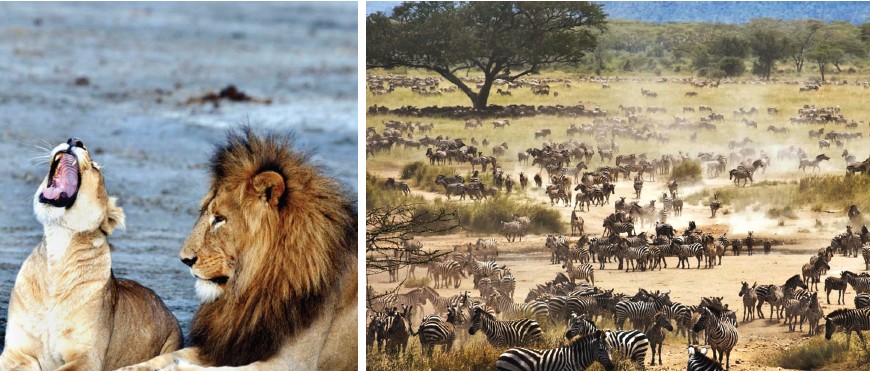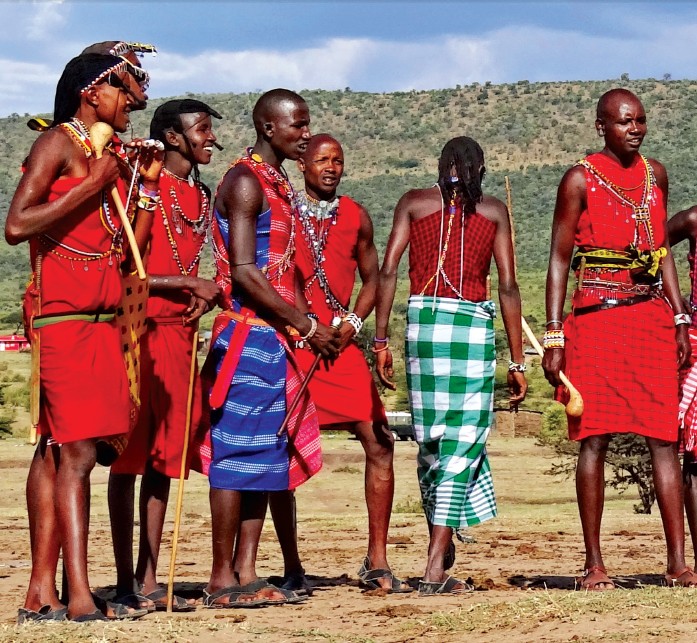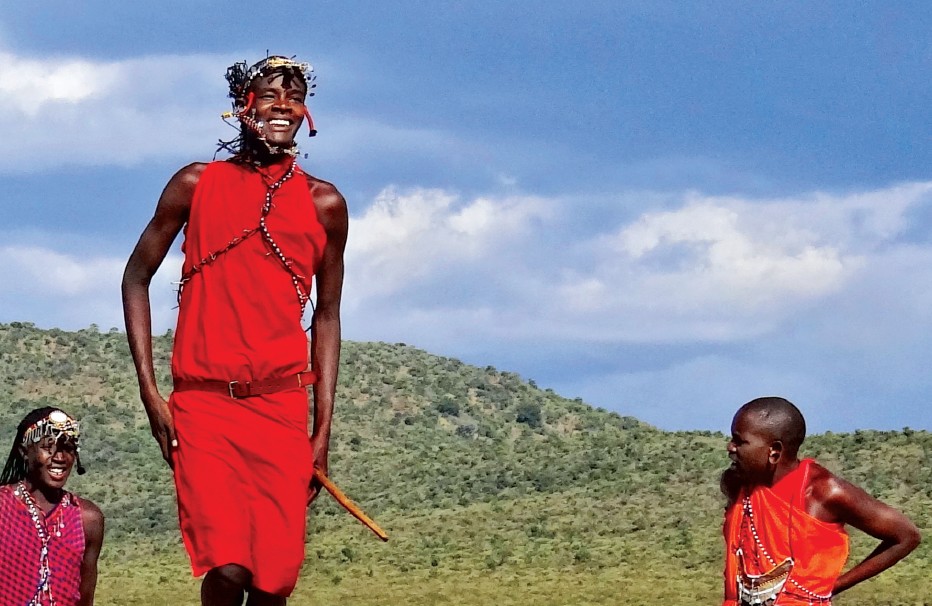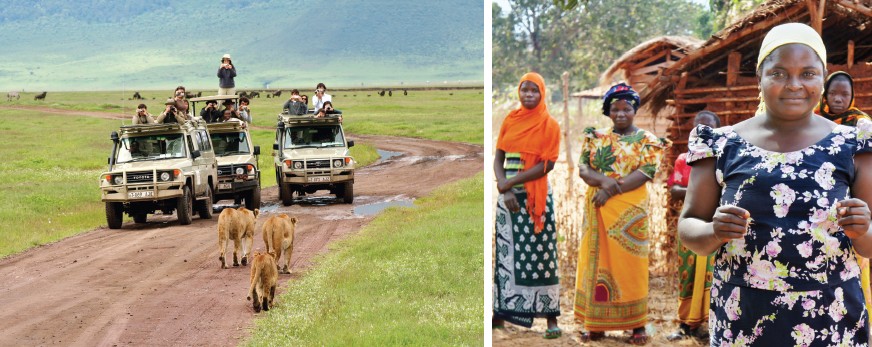Tanzania
India Outbound
May-June 2015
With a warehouse of exotic animals such as zebra, giraffe and hippopotamus; and the culture of its primitive tribes; Tanzania attracts the travellers inclined to adventure and desolation.
Muh’ – I say in a moment of rare eloquence. It’s a giraffe – my first giraffe – by the side of the road. Remember Sam Neil In Jurassic Park when he first sees a live Dinosaur. Thats me. Incredulous, astonished and instantly in love. It’s only 10 metres away, but I haul up to my binoculars, look up close at soft, long –lashed eyes swing wildly around as the giraffe is joined by another – and another. My guide grins smugly – he knows what I’ve been hit by. I explained to him– he nods in assurance as he is used to this. “Yes I saw it too. It’s always like this.”
A couple of minutes later the disbelief has turned to outrage. They can’t be sitting there, can’t be allowed to just sit there like cows. There should be bars of heavenly sunlight, majestic trumpets, and drum rolls, something to mark this occasaion. Life can’t be allowed to go on, you can’t be allowed to drive away after a few minutes as if nothing has happened. But that’s Africa. No matter what you see on TV, or how much you dream about it, the reality will take you on a toss.
And Tanzania especially. This country reminds you of all the wildlife documentaries you’ve ever seen, every Willard Price novel you’ve ever devoured. For me, however, it was about a film called Hatari (1962) about men who catch African animals for zoos. It had a fantastic opening sequence, with a jeep flying over rocks and ditches, the snort of powerful diesel engines, a man getting gored by a rhino and then a drive across the savannah, with a stirring background score. It was set in a country called Tanganyika, which merged with Zanzibar to form Tanzania in 1964.
The miracle that’s Africa
Like India Tanzania isn’t particularly homogenous. There are some 129 tribes in the country, each with it’s own language completely incomprehensible to the other. Kiswahili, the unifying language, is a development of the tribal Bantu language, with words partially taken from Arabic and Portuguese with a few surprises such as Kiswahili word for lion ‘simba’ is similar to the Sanskrit ‘simha’. The country doesn’t have tribal conflicts unlike its neighbouring country Rwanda. The Masai tribe, however, often cause trouble through stealing cattle. With cattle herding at the core of their culture, Masai believe that all cattles in the world belong to them so they don’t think they’re stealing cattle, merely taking them back.
Nature has betowed Africa with surprises. Rift Valley, for instance, that extends from Mozambique to Syria, is what taught us about continental drift. It’s a whopper. And driving into it to get to Manyara National Park, on a highway where you see giraffe by the side of the road makes you shiver a bit. Just outside Manyara region, near, Mto wa Mbu or Mosquito river we get a chance to visit the Masai, probably Africa’s best known tribe. Tall warriors with spears with ochre colour hair, jumping and ululating in blood curdling manner, before they go hunting for lions, is what you imagine. What you don’t expect, however, is that the village with the population of 400 people is one family. One chief, many wives, many children, a government school, all to themselves and a few thousand cattle with flies forming the additional members. Children, who fall victims to the flies, become used to multiple flies sittin on their eyes and ears as they engage in conversations or play around…
Into the wild
Manyara National Park, essentially a forest around a rift valley lake is an interesting case. The lake, with rivers flowing into it, is salty but the silt laden rivers make the land around it very fertile, making the park rich in terms of habitats and green for most of the year, inhibiting the migration of animals. Unfortunately, the park is underrated as the tangled vegetation make it difficult to spot animals. It is, however, famous for lions who sleep on trees to get away from flies.

Animals spotted during Safari; Women in Tanzania are involved in taking financial decisions of the family; A zeal of zebras at Serengeti National Park; Children at Art Promoters Foundation (APF), founded in 2006 to continue traditional music in the Bagamoyo community, also promotes culture tourism and youth empoerment and education
Cat sightings aren’t easy. Because of the hot weather, they tend to take refuge in thickets, out of sight, waiting for unwary prey. But going there is rewarding nonetheless. The park is absolutely bursting with giraffe, zebra and impala, with incredible sightings of elephants. I see a bunch of elephants splashing happily in a mud hole when my guide springs a question – one that must have bothered him for a while…”In India, you ride the elephants?” His tone is worried, while his expressionis that of a disbelief. The African elephants are larger, tuskier and have bigger ears than their Indian brothers; and are short tempered and not particularly friendly – clearly not the type of elephants to feed bananas to.
There are also buffaloes in abundance, meaner and scarier, until you learn about poaching. Poaching, however, is a concerning issue; Manyara that once was full of Rhinos does not have a single one left now. Cases of zebra being caught in a snare, struggling in fright and pain, are not uncommon. My guide looks glum for a minute and then says he wishes it had been a buffalo instead. “Buffalos are strong enough to break the trap. But then they wait for the poacher. Two three days no problem. And then when the poacher comes, the buffalo kills him. Even if he climbs a tree it will wait for him. Most poachers’ death in Africa are because of buffaloes.”
And then we saw a lion, about two feet away, almost close enough to tweak his ear if I felt like. This was possibly the biggest moment of my life so far. Right after seeing the sun come up over the Ngorongoro Conservation Area, defrosting my hands and lighting up in gold, a bunch of lionesses and cubs snoozing by the stream.
There is a definite sense of arrival when you get to the Serengeti National Park. The hills of the Ngorongoro region gradually flatten as you barrel along in your cloud of dust, the sky becomes bigger and bluer till you feel alone under a huge bowl of china blue, the herds of gazelle and hartebeest, get thicker and less inclined to run away. At naabi hill entrance to the park, cheetahs can be spotted at times, on the top of the hill,to scan the area below for a prey. The way you can see shadows of entire clouds on the ground, so vast is the area here. The savannah which could hide anything and usually does. Even just the name of the place derived from the language of the masai ‘siringet’ means endless plains.

(Anti-clock wise from top) Lions are found resting on trees to get away from flies. Fruit and vegetable market in Tanzania, protected from the sun by shades. Manyara Ranch Conservancy, a wildlife corridor between Lake Manyara and Tarangire National Parks, provides an opportunity to spend time in a traditional Maasai village. Arusha Maasai Market, with nearly 200 stalls selling local handicrafts, is a good place to shop for souvenir.
But again thats Africa. It’s like being a kid again, greedy for knowledge, watching the world for the first time, learning the names and behaviour of animals and people and realising dimly that theres a lot more to life than you thought. As I leave I say to myself – I will be back.
How to Reach
Tanzania has three international airports at Dar es Salaam, Zanzibar and Kilimanjaro. The national airline Air Tanzania (TC) connects the country to destinations in Asia, Africa and Europe.
When to Go
High Season is between June to September. Weather is cooler and dry. Animal-spotting is easiest, as foliage is sparse and animals congregate around dwindling water sources.
Where to stay
Tanzania has a large selection of accommodation. At the budget level, most shoe-string guesthouses cost about the same and have similar facilities (mosquito nets, fans and usually shared bathrooms and cold-water showers). Luxury hotels are often much better appointed and tend to be a fair bit cheaper than they might in other places.












